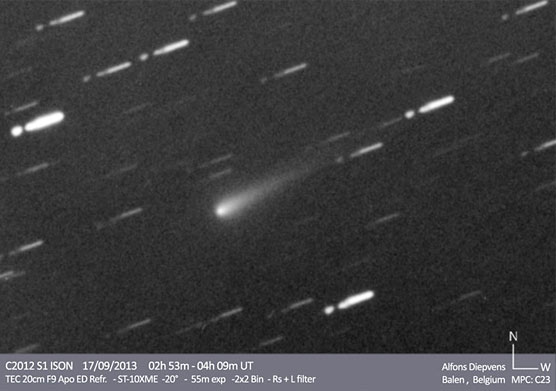
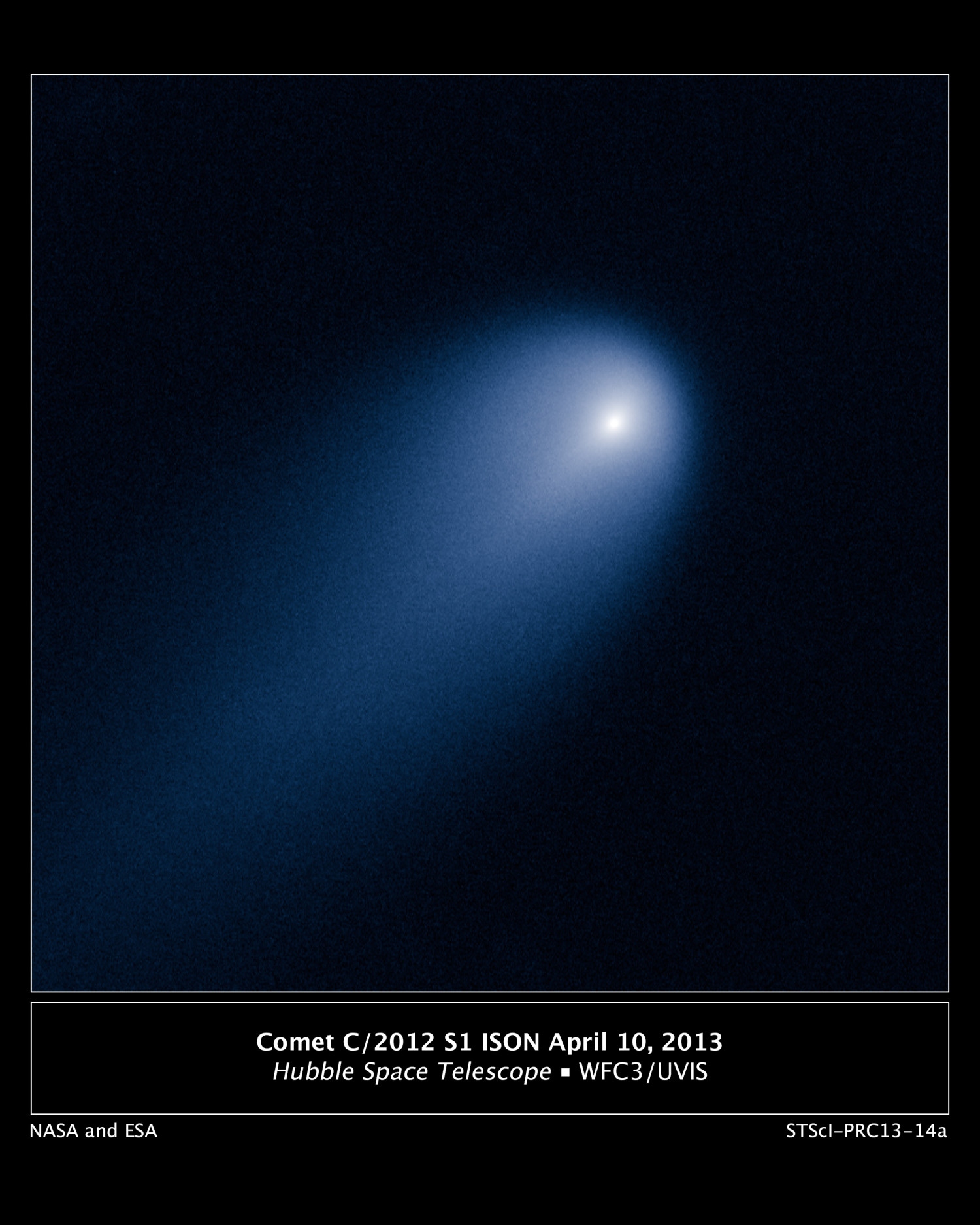
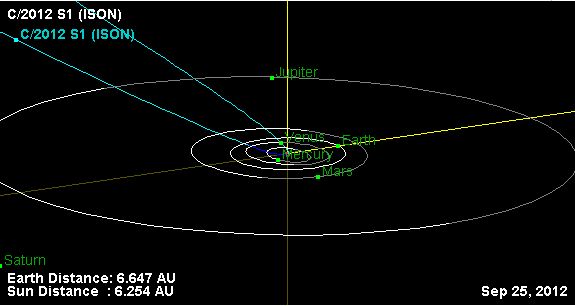
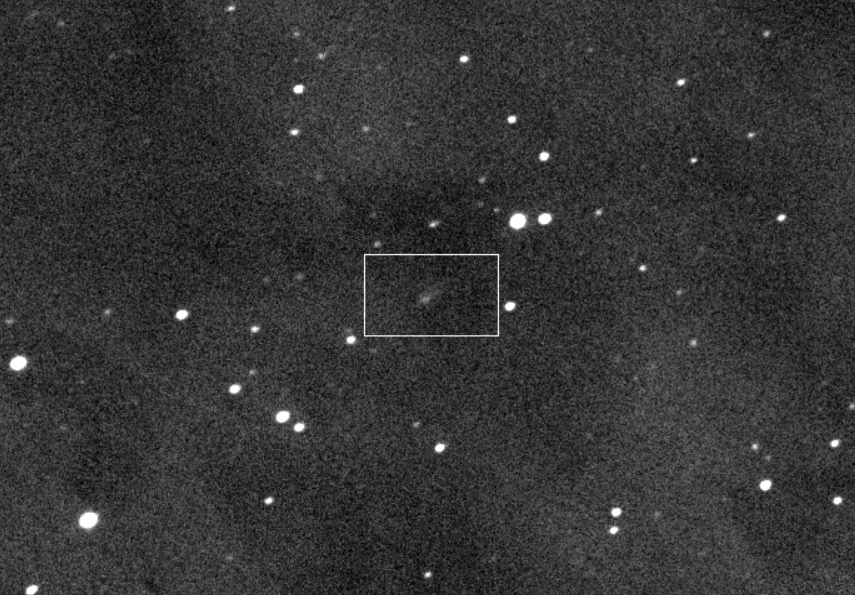
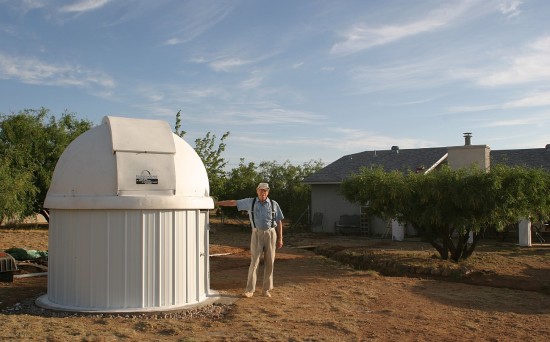
Read a complete description of Bruce Gary's remarkable recovery of Comet ISON in his blog.
The video above is from skyandtelescope.com's senior editdor Alan MacRobert. He explained that the comet is fainter that it "should" be:
Comet ISON is about two magnitudes (six times) fainter than it should be compared to the calculations that first led astronomers to predict it would become a grand naked-eye sight before dawn in early December. The comet could still turn out to be fairly good, or it might never reach naked-eye visibility at all.Skyandtelescope.com editor-in-chief Robert Naeye added:
Comets are notoriously fickle, unpredictable objects, so I'm not giving up hope just yet. But these latest observations should temper expectations. We'll simply have to wait and see how the comet develops in the months ahead as it ventures closer and closer to the searing heat of the sun.Since Bruce Gary's great capture of the comet on August 12, other astronomers have also captured Comet ISON on film, also showing that it is not living up to expectations. How many more images can we expect to see of Comet ISON between now and the end of the year? Lots!
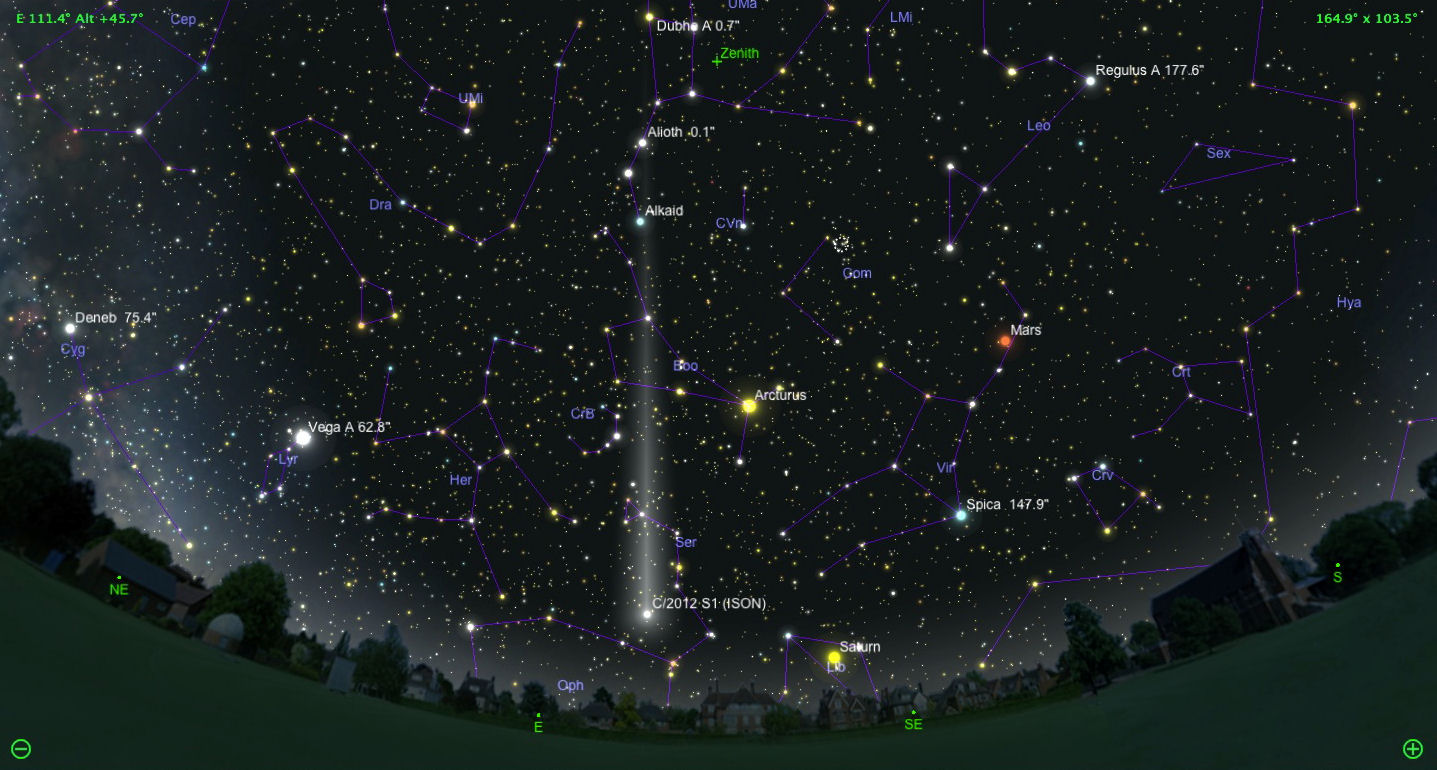
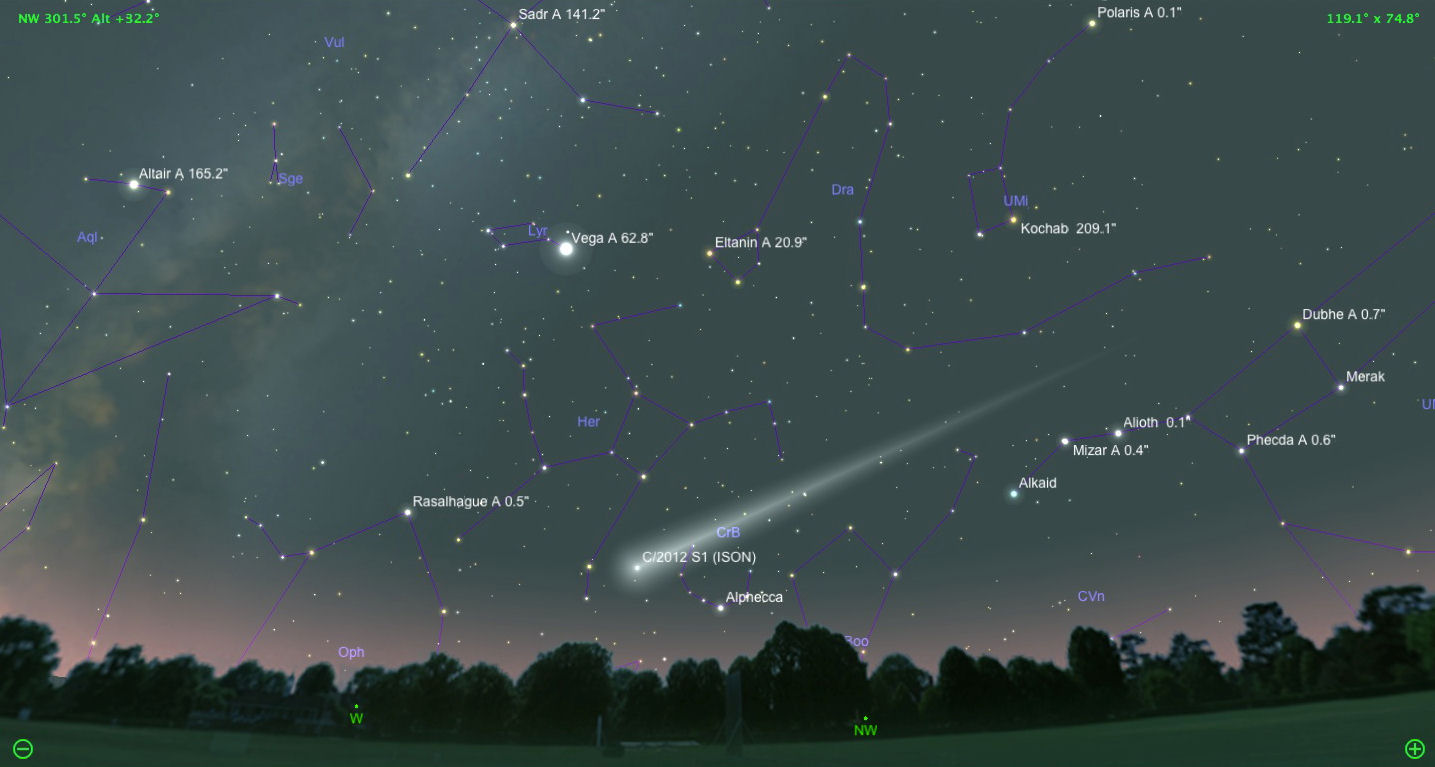
August 2013. As seen from Earth, Comet ISON was behind the sun in June and July, 2013. Its recovery occurred on August 12, 2013 when amateur astronomer Bruce Gary of Arizona spotted it. In August, it was bright enough to be seen by observers using telescopes and other special equipment at dark locations. Look here for August 2013 finder charts for Comet ISON.
September and October 2013. Comet ISON will brighten as the months pass. In September and October, amateur astronomers will surely be trying to pick it up. The comet will be sweeping in front of the constellation Leo then. It'll pass first near Leo's brightest star Regulus, then near the planet Mars. Finder charts for Comet ISON for September and October.
November 2013. Comet ISON will get brighter still throughout November as it nears its late November perihelion (closest point to our sun). Comet expert John Bortle wrote on June 13 that he expects the comet to reach visibility to the unaided eye about three weeks before the November 28 perihelion date.
Comet ISON will come within 800,000 miles (1.2 million km) of our sun's surface on November 28. That's over 100 times closer to the sun than Earth. This close pass to the sun might cause Comet ISON to break to pieces, and, if that happens, the comet is likely to fizzle. Or ISON might emerge from perihelion bright enough to see with the eye, with a comet tail. Comets are notoriously unpredictable, so there's just no telling, at this point, how bright it will get.
In November, ISON will pass very close to the bright star Spica and the planet Saturn, both in the constellation Virgo. These bright stars might help you find the comet. There has been some mention that Comet ISON could become a daylight object, briefly. Remember, though, at perihelion, Comet ISON will appear close to the sun on the sky's dome (only 4.4° north of the sun on November 28). Although the comet will be bright, it's likely that only experts who know how to look near the sun, while blocking the sun's glare, will see it. November finder charts for Comet ISON here.
December 2013. This is likely to be the best month to see Comet ISON, assuming it has survived its close pass near the sun intact. The comet will be visible both in the evening sky after sunset and in the morning sky before sunrise. As ISON's distance from the sun increases, it'll grow dimmer. Comet expert John Bortle wrote on June 13:
The crescendo of the apparition will likely occur between December 10th and 14th, when the comet will be best seen just before dawn after the moon sets. Although little or perhaps nothing of the head will remain, the huge tail will loom in the northeastern sky. Almost evenly illuminated over its length, this rapidly fading appendage could [span] almost a quarter of the heavens as seen under good, dark observing conditions.People all over Earth will be able to see it, but it'll be best seen from the Northern Hemisphere as 2013 draws to a close. December finder charts for Comet ISON here.
January 2014. Will ISON still be visible to the eye? Hopefully. Only time will tell. On January 8, 2014, the comet will lie only 2° from Polaris - the North Star. And here's something else that's fun. On January 14-15, 2014, after the comet itself has passed but when Earth is sweeping near the comet's orbit, it might produce a meteor shower, or at least some beautiful night-shining or noctilucent clouds. January finder charts for Comet ISON here.
How bright will Comet ISON be later this year? How long will its tail be?
No one can answer these questions yet. In his June 13 article published at skyandtelescope.com, comet expert John Bortle explained the reason we can't know yet how bright Comet ISON will be:
A close solar pass can disrupt and evaporate a comet's nucleus completely. The intrinsically faintest sungrazer to survive its brush with the sun reasonably intact was Comet Ikeya-Seki in 1965. The long-tailed sungrazers seen in 1880 and 1887 experienced total disruption of their nuclei and dissipated completely within weeks after perihelion. The latest observations of Comet ISON suggest that it's intrinsically about as bright as those 19th-century objects, so the survival of its head much beyond November 28 is in question.Who discovered Comet ISON?
However, ISON is decidedly brighter than the recent Comet Lovejoy, which totally disrupted and, despite this or perhaps because of it, put on a spectacular long-tailed show for Southern Hemisphere observers at the end of 2011.
Eastern European and Russian astronomers announced the new comet on September 24, 2012. Discovery magnitude was 18.8 - in other words, extremely faint. Vitali Nevski of Vitebsk, Belarus and Artyom Novichonok of Kondopoga, Russia spotted the comet on CCD images obtained on September 21 with a 0.4-m f/3 Santel reflector of the International Scientific Optical Network (ISON) near Kislovodsk, Russia. Afterwards, astronomers at Remanzacco Observatory in Italy confirmed the comet's presence with the image above.
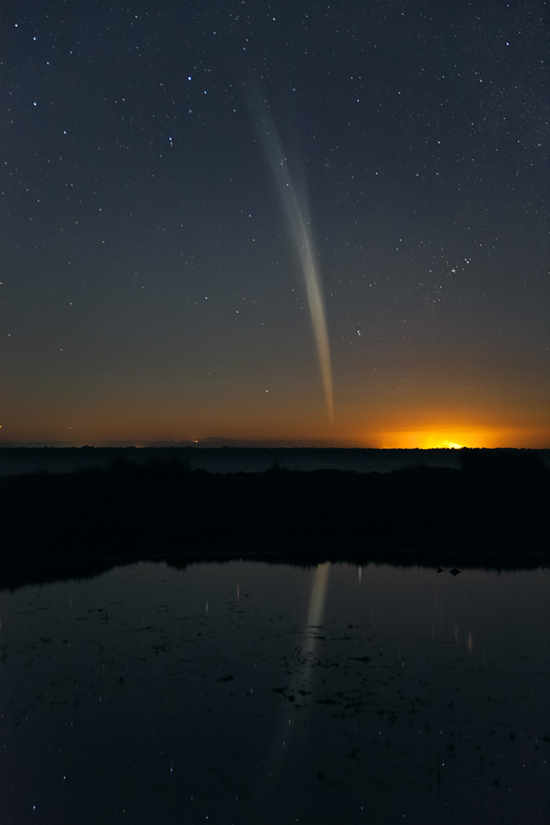
At this writing - August 14, 2013 - it does not appear that Comet ISON will become a legendary comet of the century. Comet ISON might still break into fragments when closest to the sun, as the much-hyped Comet Elenin did around August 2011.
Or, Comet ISON might survive its encounter with the sun as Comet Lovejoy did in late 2011. If so, when it emerges from perihelion (closest point to sun) in late November, it might become visible to the eye. And there is one thing we can count on. That is, if Comet ISON does become a bright comet, visible to the eyes of watching earthlings, it will be beautiful. All bright comets are.
No doubt about it, comets have a mystique. Once considered omens of doom, we now know them as icy visitors from the outer solar system that sweep near our sun, then disappear again into the depths of space, perhaps never to return. People get excited about comets. They are temporary visitors to our region of the solar system. This comet might not be as bright as hoped, but ... it will be watched.
Bottom line: Comet C/2012 S1 (ISON) is headed for a close encounter with our sun in late 2013. Although some thought this comet might become spectacular later this year, the chances of that are now not so good. This post contains a month-by-month viewing guide, some history of the comet, and a word about what to expect from Comet ISON.

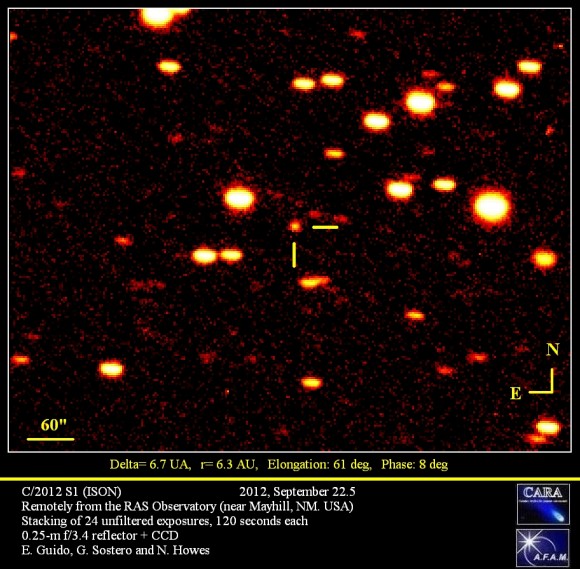



Someone referenced the JPL Small Body Database on a Youtube vid a couple of months ago
They were pointing out how many observasions had been recorded and thought is was quite high compared to other comets
Since then the frequency of observation has accelarated - the last few figures are:
5152 observations in 746 days
5280 observations in 752 days
5492 observations in 759 days (This is the figure as per the update to the site today)
212 observations in the last 7 days
As NASA has said, there's no reason to point a camera at it as there is no scientific interest in doing so!
Maybe it's all a joke or they get some perverse pleasure in mugging us off this way
"Comet of the century" but you not allow to see any clear images of it
Of course, they can't be blamed for losing Deep Impact, BRIISON or the government shutdown, which co-incided nicely with the close approach to Mars